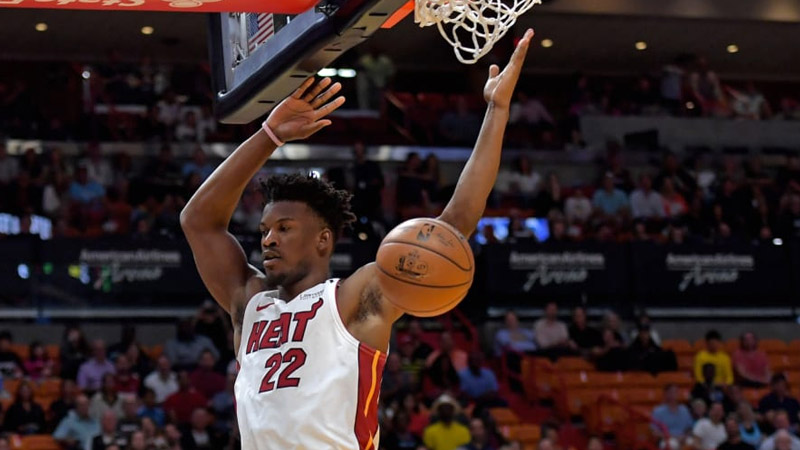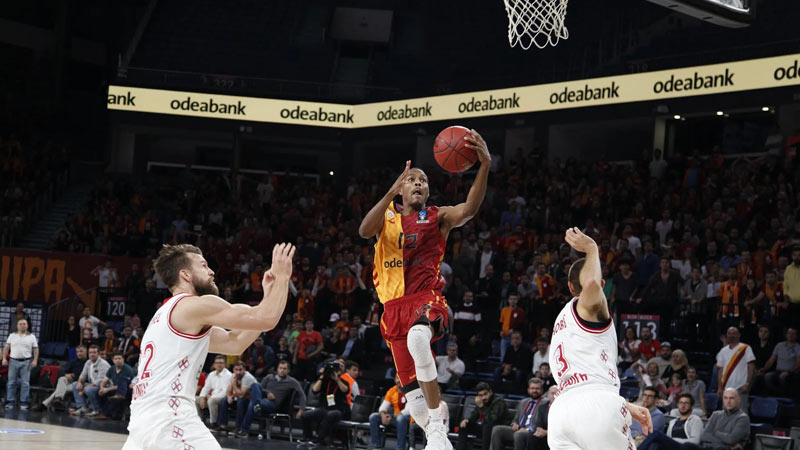In the dynamic game of basketball, teams are constantly seeking creative strategies to outmaneuver the defense and create scoring opportunities.
One such tactic that has proven effective time and again is the backdoor cut. The backdoor cut is a clever offensive move where an offensive player quickly cuts behind the defense toward the basket, receiving a pass for an easy scoring opportunity.
In this article, we will delve into the intricacies of the backdoor cut, exploring its definition, key factors for success, execution techniques, and the reasons why it is such a potent weapon in basketball.
By understanding the art of the backdoor cut, players and teams can unlock new dimensions of offensive prowess and create chaos for opposing defenses.
What Is The Backdoor Cut in Basketball?
The backdoor cut is a strategic offensive move in basketball that aims to deceive the defense by quickly cutting behind the defender toward the basket. It is an effective way for offensive players to create separation from their defender and receive a pass in a prime scoring position near the rim.
The term “backdoor” is derived from the idea of entering through a less expected route, catching the defense off guard and exploiting their momentary lapse in positioning.
To execute a successful backdoor cut, the offensive player typically starts by positioning themselves on the perimeter of the wing, away from the ball.
They then utilize a combination of misdirection, timing, and quickness to make a sudden change of direction and cut towards the basket, behind the defender. The aim is to create enough space to receive a pass from a teammate for an open shot or a layup.
The backdoor cut is particularly effective against aggressive defenders who overplay the passing lanes or apply heavy pressure on the ball.
Key Factors for Successful Backdoor Cuts

Source: bballwriters.com
Some of the key factors for successful backdoor cuts are mentioned in the following section.
Timing
The timing of the cut is crucial, with the offensive player reading the movements of the defense and making their move at the opportune moment when the defender is off balance or focused elsewhere.
Communication
Effective communication between the passer and the cutter is vital for a successful backdoor cut. Non-verbal cues, such as eye contact or a subtle signal, can alert the passer to deliver a timely pass.
Court Awareness
Both the cutter and passer must have a strong sense of court awareness, and understanding of the positioning of teammates, defenders, and available passing lanes to execute the backdoor cut effectively.
Quickness and Agility
The offensive player executing the backdoor cut must possess the necessary speed, agility, and change of direction skills to swiftly move past their defender and create separation for the pass.
Trust and Chemistry
Building trust and chemistry with teammates is crucial for successful backdoor cuts. Both the cutter and passer must develop an understanding of each other’s tendencies and timing to maximize the effectiveness of the play.
How to Execute a Successful Backdoor Cut?

Source: w.elephantparkcm.com
Executing a successful backdoor cut requires coordination, awareness, and precise timing. Here’s a step-by-step guide to executing this offensive move effectively:
Read the Defense
Start by observing the positioning and movements of the defender who is guarding you. Look for signs of overplaying or being too focused on the ball, which can create an opportunity for a backdoor cut.
Create a Diversion
To set up the backdoor cut, make a strong move as if you are going in one direction. This can be towards the ball or to the perimeter. The goal is to draw the defender’s attention and create a momentary diversion.
Change Direction
Once you have created the diversion and caught the defender off guard, quickly change direction and explode toward the basket. Utilize your speed, agility, and quickness to beat the defender and create separation.
Timing the Cut
Timing is crucial for a successful backdoor cut. Coordinate with your teammate who will be delivering the pass.
Communicate with them to ensure they are aware of your intentions and ready to make the pass when you have created enough separation from the defender.
Finishing the Play
Once you receive the pass, focus on finishing the play near the basket. This could involve going for a layup, dunk, or even making a kick-out pass to an open teammate if the defense collapses on you.
Maintain composure, make the right decision, and execute the finish with precision.
Remember, practicing the backdoor cut in game-like scenarios and developing chemistry with your teammates is essential for executing it successfully.
Effective communication, reading the defense, and being in sync with your teammates will significantly increase the chances of converting the backdoor cut into a scoring opportunity for your team.
Why Backdoor Cut is So Effective in Basketball?
The backdoor cut is highly effective in basketball due to several reasons:
Surprise Element
The backdoor cut catches the defense off guard, as they are often focused on guarding the ball or anticipating a traditional offensive play.
The element of surprise creates confusion and allows the cutter to exploit open space for an easy scoring opportunity.
Breaking Down the Defense
The backdoor cut forces defenders to react and make quick decisions. This can lead to defensive breakdowns, leaving gaps in coverage or resulting in defensive fouls.
Utilizing Overplaying Defenses
If a defender is consistently overplaying or denying the passing lanes, the backdoor cut provides an effective countermove to exploit the aggressive defense.
High-Percentage Shots
Backdoor cuts often lead to high-percentage scoring opportunities near the rim, where the offensive player can finish with a layup or dunk. This increases the efficiency of the offensive possession.
Psychological Impact
Successful backdoor cuts can demoralize the defense, making them more hesitant to apply aggressive defensive tactics or take risks, thus opening up other offensive opportunities.
Benefits of the Backdoor Cut for the Offense
Some benefits of the backdoor cut are discussed in the next section. Check them out with extra care.
Creates Open Lanes
The backdoor cut forces defenders to react quickly to the offensive player’s change of direction. This creates space and opens up passing lanes for teammates to deliver the ball, allowing for easy scoring opportunities near the basket.
Surprises the Defense
The backdoor cut is an unexpected move that catches defenders off guard. By utilizing misdirection and timing, offensive players can exploit defensive lapses and capitalize on the element of surprise.
High-Percentage Scoring Opportunities
The backdoor cut often leads to high-percentage shots near the rim. By cutting behind the defense, offensive players position themselves for layups, dunks, or short jump shots, resulting in efficient scoring chances.
Draws Defensive Attention
The threat of the backdoor cut puts pressure on the defense. Defenders must be aware of the offensive player’s movement, which opens up opportunities for other offensive players to exploit defensive rotations and find open spots on the court.
Creates Offense from Different Positions
The backdoor cut can be executed by players at various positions, providing versatility and unpredictability in the team’s offensive schemes.
Guards, forwards, and even centers can utilize the backdoor cut to keep the defense guessing and create scoring opportunities.
FAQs
Can the backdoor cut be used in both half-court and fast-break situations?
Yes, the backdoor cut can be effective in both half-court and fast-break situations.
In the half-court, it allows players to exploit defensive positioning, while in fast-break scenarios, it can catch defenders off balance and lead to quick scores.
How can players effectively execute a backdoor cut?
Timing and communication are essential for a successful backdoor cut. Offensive players should read the defense, use fakes to misdirect defenders and communicate their intentions with teammates to ensure the pass is delivered at the right moment.
What are some common defensive strategies to counter the backdoor cut?
Defensive strategies to counter the backdoor cut include denying passing lanes, playing with active hands to disrupt the passing lane, and maintaining proper positioning to prevent easy cuts to the basket. Good communication and anticipation are key defensive elements.
Can the backdoor cut be used in isolation situations?
Yes, the backdoor cut can be effective in isolation situations. By isolating the offensive player and drawing defensive attention, there is more room for the backdoor cut to catch the defense off guard and create scoring opportunities.
Are there any potential risks or drawbacks to using the backdoor cut?
While the backdoor cut can be a valuable offensive weapon, it requires proper timing and execution. Poor communication or mistimed cuts can result in turnovers or missed opportunities.
Additionally, defenses that are aware of the backdoor cut can adjust and position themselves to defend against it.
Bottom Line
The backdoor cut is a strategic offensive move that unlocks scoring opportunities by creating open lanes, surprising the defense, and generating high-percentage shots near the basket.
This technique can be effectively utilized in both half-court sets and fast-break situations, providing versatility and unpredictability to an offense.
By mastering the backdoor cut, players and teams can add a potent weapon to their offensive arsenal and keep defenses on their toes.
So, next time you hit the court, don’t forget to incorporate the backdoor cut into your playbook and watch your scoring opportunities multiply. Thank you.







